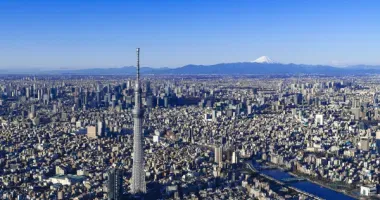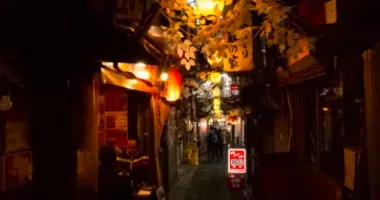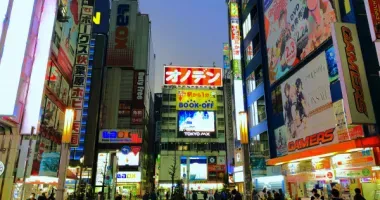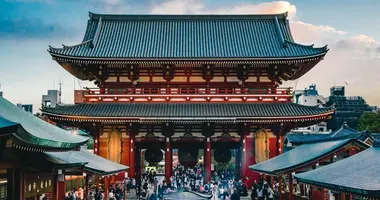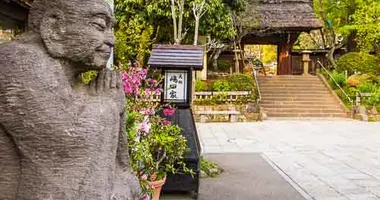Nezu Shrine Tokyo: A hidden gem of history and beauty
Nestled in the heart of Tokyo's Bunkyo ward, Nezu Shrine stands as a testament to Japan's rich cultural heritage and natural beauty. This Shinto sanctuary, with roots dating back over 1,900 years, offers visitors a serene escape from the bustling city life. Known for its stunning architecture, vibrant azalea gardens, and vermilion torii gates, Nezu Shrine captivates with its timeless charm. As one of Tokyo's oldest and most beautiful shrines, it seamlessly blends historical significance with breathtaking aesthetics, making it a must-visit destination for both history enthusiasts and nature lovers alike.
The rich history and legends of Nezu Shrine
The story of Nezu Shrine is steeped in legend and historical significance. According to tradition, the shrine was founded around 1,900 years ago by the legendary priest Yamato Takeru no Mikoto. Originally located in Sendagi, just north of its current location, the shrine was dedicated to Susanoo-no-Mikoto, the Shinto god of seas and storms.
The shrine's prominence grew significantly during the Edo period. In 1705, Tokugawa Tsunayoshi, the fifth shogun of the Tokugawa dynasty, relocated the shrine to its present site in Nezu. This move was made to commemorate the adoption of Ienobu as his successor. The relocation elevated the shrine's status, with Tokugawa Ienobu choosing it as his guardian deity.
Nezu Shrine's historical importance extends beyond the Tokugawa era. When Emperor Meiji moved the imperial capital from Kyoto to Tokyo in 1868, he sent envoys to Nezu Shrine to seek divine intercession. This act further cemented the shrine's significance in Japan's transition to the modern era.
Perhaps most remarkably, Nezu Shrine has survived numerous calamities that have befallen Tokyo over the centuries. It emerged unscathed from the Great Kanto Earthquake of 1923 and the firebombings of World War II, preserving its original Edo-period structures. This resilience has made Nezu Shrine one of the few places in Tokyo where visitors can experience authentic Edo-period architecture and atmosphere.

Nezu Shrine Entrance with torii gate and lantern
Architectural marvels: Exploring the shrine's unique structures
Nezu Shrine is renowned for its exquisite architecture, which exemplifies the Gongen-zukuri style, a hallmark of Edo-period shrine construction. This style, also seen in the famous Nikko Toshogu Shrine, is characterized by its ornate details and harmonious integration with the surrounding nature.
The shrine complex boasts several noteworthy structures:
- Romon Gate (楼門): This two-story gate, built in 1706, serves as the shrine's main entrance. It's an Important Cultural Property and features intricate carvings and vibrant colors.
- Karamon Gate (唐門): This Chinese-style gate is known for its distinctive curved gable roof and elaborate decorations.
- Honden (本殿): The main sanctuary, constructed in the Ishi-no-ma-zukuri style, houses the shrine's primary deity.
- Sukibei (透塀): A 200-meter long latticed wall surrounds the honden, creating a sense of mystery and elegance.
One of the most striking features of Nezu Shrine is its collection of vermilion torii gates. Reminiscent of the famous torii Shinto shrine gates at Fushimi Inari Taisha in Kyoto, these gates create a mesmerizing tunnel effect as they wind up the hillside. This pathway leads to the Otome Inari Shrine, a smaller shrine within the complex dedicated to the god of rice and prosperity.
The architectural beauty of Nezu Shrine is further enhanced by its seamless integration with the natural landscape. Visitors can admire the reflections of the ornate buildings in the shrine's serene ponds, creating picture-perfect scenes that change with the seasons.

Nezu Shrine Romon Gate, Bunkyo-ku, Tokyo
The famous Azalea Festival: A springtime spectacle
One of the most anticipated events at Nezu Shrine is the Azalea Festival, locally known as Bunkyo Azalea Festival or Tsutsuji Matsuri. Held annually from early April to early May, this festival transforms the shrine grounds into a breathtaking sea of colors.
The festival showcases over 3,000 azalea plants of more than 100 varieties, covering an area of approximately 6,600 square meters. The hillside garden, known as Tsutsuji-yama or Azalea Mountain, bursts into life with vibrant shades of pink, white, and purple. This spectacular display attracts visitors from all over Tokyo and beyond, making it one of the city's most beloved spring events.
During the festival, visitors can enjoy:
- Strolling through winding paths surrounded by blooming azaleas
- Taking in panoramic views of the colorful hillside from various vantage points
- Participating in traditional Japanese activities and games
- Sampling local delicacies from food stalls set up for the occasion
- Watching performances of traditional music and dance
The Azalea Festival not only celebrates the beauty of nature but also provides a unique opportunity to experience Japanese culture and traditions. It's a perfect example of how Nezu Shrine continues to play a vital role in the local community, bringing people together to appreciate both natural beauty and cultural heritage.
For those unable to visit during the festival, Azalea Festival Video footage is available, offering a glimpse of this spectacular event.
Spiritual significance and cultural importance
Nezu Shrine holds immense spiritual and cultural significance in Japanese society. As one of the Tokyo Jissha, or Ten Shrines of Tokyo, it is considered among the most important Shinto sanctuaries in the capital. The shrine is dedicated to Susanoo-no-Mikoto, the Shinto god of the sea and storms, and is believed to offer divine protection and blessings.
Visitors to Nezu Shrine can participate in various Shinto rituals and customs:
- Purification: Washing hands and mouth at the temizuya (water pavilion) before entering the main shrine area
- Offering prayers: Approaching the main hall, bowing, clapping, and offering silent prayers
- Omikuji: Drawing fortune slips that predict one's future luck
- Ema: Writing wishes on wooden plaques and hanging them at designated areas
The shrine is also a popular venue for Japanese weddings, where couples seek blessings for their union in traditional Shinto ceremonies. These ceremonies, with their ancient rituals and colorful attire, offer a glimpse into Japan's rich cultural traditions.
Throughout the year, Nezu Shrine hosts various festivals and events that showcase Japanese cultural practices. These include:
- Hatsumode: The first shrine visit of the New Year
- Setsubun: A bean-throwing festival to ward off evil spirits
- Shichi-Go-San: A celebration for children aged three, five, and seven
These events not only preserve ancient traditions but also foster a sense of community and cultural continuity in modern Tokyo.

Main Hall (honden), Nezu Shrine, Bunkyo-ku, Tokyo
Navigating the shrine grounds: A visitor's guide
Exploring Nezu Shrine is a delightful experience that can be enjoyed at a leisurely pace. Here's a guide to help visitors navigate the shrine grounds and make the most of their visit:
- Main Entrance: Begin your journey at the impressive Romon Gate, taking a moment to admire its intricate architecture.
- Purification Fountain: Before proceeding, perform the purification ritual at the temizuya.
- Main Shrine Area: Visit the Honden and offer prayers or simply admire the beautiful architecture.
- Torii Gate Tunnel: Take a stroll through the vermilion torii gates, which lead up the hillside.
- Otome Inari Shrine: At the top of the hill, visit this smaller shrine dedicated to the god of rice and prosperity.
- Azalea Garden: Explore the famous azalea garden, especially beautiful during the spring festival.
- Koi Pond: Relax by the serene pond, home to colorful koi fish.
- Stone of Literary Figures: Visit the Bungo no Ishi, where famous writers like Natsume Soseki found inspiration.
Visitors should be mindful of shrine etiquette:
- Dress modestly and respectfully
- Speak quietly and avoid disturbing others who may be praying
- Do not eat or drink in the main shrine area
- Ask permission before taking photos of people, especially during ceremonies
For those interested in a deeper understanding of the shrine's history and significance, guided tours are sometimes available, or visitors can make use of informational pamphlets provided at the shrine office.

Nezu Shrine, Bunkyo-ku, Tokyo

Nezu Shrine grounds with small pond and viewing platform belonging to Otome Inari Shrine
Practical information: Access, admission, and nearby attractions
Access:
Nezu Shrine is conveniently located in central Tokyo and easily accessible by public transportation. The nearest stations are:
- Nezu Station (Tokyo Metro Chiyoda Line): 5-minute walk
- Sendagi Station (Tokyo Metro Chiyoda Line): 5-minute walk
- Todaimae Station (Tokyo Metro Namboku Line): 5-minute walk
For detailed directions, visitors can refer to this Google Map to Nezu Shrine.
Admission:
- Entry to the shrine grounds is free
- During the Azalea Festival, there is a small fee (typically around 200 yen) to enter the azalea garden
Opening Hours:
- The shrine grounds are open 24 hours
- The main hall is open from 6:00 AM to 5:00 PM
Nearby Attractions:
Visitors to Nezu Shrine can easily combine their trip with other nearby attractions:
- Ueno Park: A large public park home to several museums and Ueno Zoo
- Kyu-Iwasaki Teien Gardens: A beautiful Japanese garden and former residence of the Iwasaki family
- Yushima Tenjin: Another historic shrine known for its plum blossoms
- Daimyo Clock Museum: A unique museum showcasing traditional Japanese clocks
For those looking to explore more of Tokyo's spiritual side, the Japan Temples & Shrines guide offers a comprehensive overview of other significant religious sites in the city.
Nezu Shrine offers a perfect blend of historical significance, natural beauty, and spiritual tranquility in the heart of Tokyo. Whether you're interested in architecture, food, handicrafts, or simply seeking a moment of peace in the bustling city, this hidden gem promises a memorable experience for all visitors.
For more information on exploring Japan, including its rich cultural heritage and beautiful landscapes, consider checking out these Books on Japan Travel.






